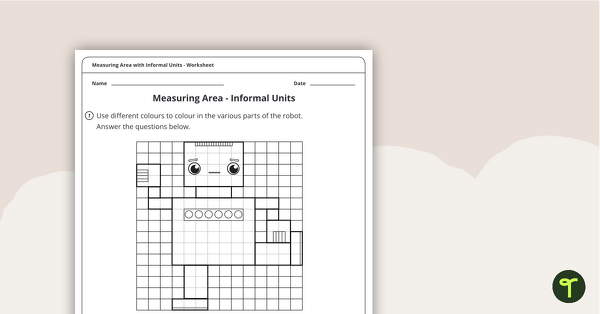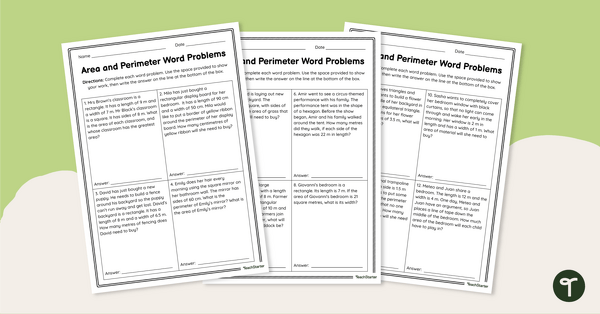Use this area and perimeter dice game as a pair activity during your maths lessons on measurement.
Roll and Draw the Perimeter and Area
Are you looking for a student-centered activity to help your students explore the relationship between perimeter and area? Then look no further than Teach Starter’s roll and draw activity!
This partner game is a fun and engaging way to teach your students to teach your students about area and perimeter. Here’s how to play:
- Choose Your Colours – Each player selects a different colored pencil to use, adding a touch of personalisation to the game.
- Roll the Dice – Roll two dice, and watch the magic unfold. One number will determine the length, while the other will dictate the width of your shape.
- Draw and Colour – Armed with their dice-generated dimensions, students draw and colour a rectangle or square on the grid paper with the measurements they’ve rolled.
- Calculate – The learning doesn’t stop at drawing. Students must now calculate and write the perimeter and area inside or next to their newly created shape. This hands-on practice solidifies these important mathematical concepts in a memorable way.
- Compete and Collaborate – Students take turns with their partner, unleashing their inner artist and mathematician, until they run out of space on the grid paper.
This area and perimeter maths game downloads as either a full-colour or black-and-white PDF. It is a fantastic educational tool, combining the excitement of rolling dice with the practicality of applying maths concepts in a real-world context.
The Advantages of This Area and Perimeter Dice Game
Many teachers can attest to the numerous advantages of incorporating maths dice games into the classroom. These games not only make learning mathematics more enjoyable but also offer several educational benefits. Here are some key advantages:
- Engagement – Maths dice games are inherently fun and interactive. Students become actively engaged in the learning process, making it more likely that they will stay focused and retain the material being taught.
- Hands-on Learning – This area and perimeter dice game provides a hands-on approach to learning maths. Students physically roll dice, make calculations and draw shapes, promoting a deeper understanding of mathematical concepts.
- Critical Thinking – Maths dice games require students to strategise, make decisions and solve problems on the spot. This helps develop critical thinking skills and boosts their ability to think logically.
- Competition and Collaboration – This area and perimeter dice game has been designed to be played in pairs, fostering healthy competition and collaboration among students. They learn to work together, share strategies and learn from one another.
- Differentiated Learning – Most dice games can be adapted to various skill levels. Teachers can modify the rules or the complexity of the games to meet the needs of individual students, allowing for differentiated instruction.
Download This Area and Perimeter Maths Game
Use the dropdown menu on the Download menu to choose your preferred file option.
More Area and Perimeter Resources
Has this resource piqued your interest in our area and perimeter resources? Click below for more teacher-created, curriculum-aligned resources!
[resource:4875782] [resource:18109] [resource:3303438]












0 Comments
Write a review to help other teachers and parents like yourself. If you'd like to request a change to this resource, or report an error, select the corresponding tab above.